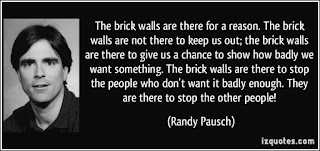Seven Essentials for Project Based Learning teaches us that there are seven essential elements of meaningful projects. These elements are:
- A Need to Know- This discusses how teachers can use an entry event to engage student interest and initiate questioning.
- A Driving Question- Driving questions helps give the project a sense of purpose and challenge to the students.
- Student Voice & Choice- Teachers need to make the project feel meaningful to the students and sometimes even let them choose the topic and driving sentence of the project.
- 21st Century Skills- Incorporating 21st century skills is giving the students the opportunity to use a skill set that will benefit them in their futures.
- Inquiry & Innovation- Having students conduct a real inquiry lets them dive deeper into the project and become even more engaged.
- Feedback and Revision- This makes learning more meaningful and shows students that they are not always going to get everything right the first time.
- A Publicly Presented Project- Students are able to present to more than just the teacher.
In the video Project Based Learning by Tony Vincent I learned that Common Core Standards are the WHAT and PBL is the HOW. This video lists the may different skills that children learn through PBL, such as, collaborative skills, communication skills, critical thinking skills, and career & life skills. This video also describes some of the important actions of PBL as questioning, investigating, sharing, and reflecting. There are so many technological resources today that students could use so they should be allowed to. Todays students want to "take charge of their learning." They also "have a voice and choice in their learning" and we as educators should embrace that.
The author of Project Based Learning in PE explains that she found a way to incorporate PBL in physical education. She let her high school students create a physical fitness program for the middle school students. This not only keeps the high school students active in their own physical fitness plan, but also address several levels of Bloom's Taxonomy. This teaches us that if you look for a way to incorporate PBL you can almost always find a way.
Two Students Solve the problem of Watery Ketchup By Designing A New Cap is about two students that really hated wet bread. These boys created a new cap for ketchup bottles using a 3D printer. Having access to this technology and also getting to pick a topic that interested them led them to create something great. They did not want to give on it, because they were so passionate about it and just got to go about it in their own way. This is how we should let children solve problems.
The video PBL- High School Math discusses how students can use a program, Khan, to work their math problems on their own. If they get stuck on a problem they can click on the hints button or they can watch a video of a similar problem being worked. This program tells them when to review or practice more. This allows them to stay engaged and have a sense of ownership of their learning experience.













